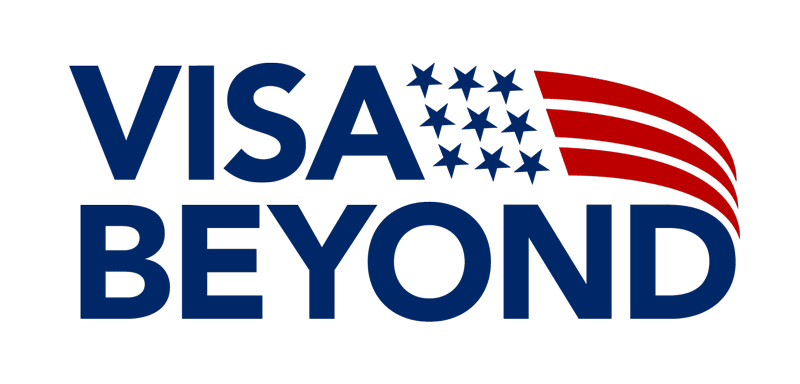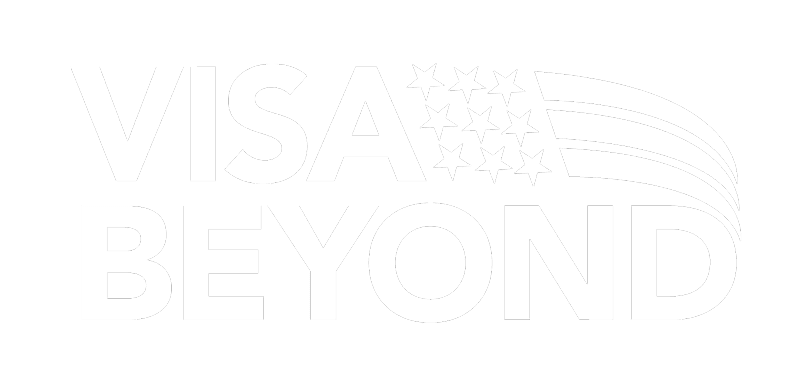EB-2 Visa:
The Ultimate Path
for Skilled Professionals.
EB-2 Visa helps skilled professionals and advanced degree holders gain U.S. residency by contributing their expertise to the economy.
EB-2 Visa lets you skip the job offer with a National Interest Waiver (NIW) if your work benefits the U.S., allowing you to self-petition. It’s a faster, flexible path for professionals in fields like healthcare or education.
Self-Apply
Apply independently
without sponsorship.
Speedy Processing
Prioritized for
fast approval.
Family Access
Your spouse and children under
21 can get green cards too.
Fast Green Card
Quick path to
U.S. residency.
No Sponsorship Needed
No Sponsorship Needed.
Client
Satisfaction
Years
in the business
EB-2 Visa:
Overview and Key Benefits
EB-2 Visa is one of the most desirable U.S. immigration options for highly skilled professionals. It is a second-preference employment-based visa designed for those with advanced degrees or exceptional abilities in fields like science, technology, business, and the arts. This visa offers a clear pathway to U.S. permanent residency (Green Card), enabling you and your family to live and work in the United States.
What is the EB-2 Visa?
EB-2 Visa applies to two groups:
- Advanced Degree Holders: This category is for individuals who hold a degree higher than a bachelor’s (such as a master’s or PhD) or possess a bachelor’s degree plus five years of progressive, post-baccalaureate work experience.
Exceptional Ability Individuals: Those with a level of expertise significantly above what is typically encountered in their field. For example, professionals who have won prestigious awards, have significant publications, or have contributed to breakthrough research or projects.
Top Benefits of the EB-2 Visa for Skilled Workers
- Fast-Track to Green Card: The EB-2 visa provides a streamlined process to U.S. permanent residency, which is often faster than the EB-3 visa.
- Dual Intent: The EB-2 allows for dual intent, meaning you can apply for a Green Card while on a non-immigrant visa like the H-1B without affecting your visa status.
- Self-Petition Option with NIW: Applicants can self-petition through the National Interest Waiver (NIW), bypassing the employer sponsorship requirement.
- Professional Mobility: Once your I-140 is approved, you're less dependent on your employer, providing you with the flexibility to change jobs.
- Path for Family: Spouses and children under 21 can join the visa holder and potentially work in the U.S. with H-4 dependent status.
- Global Recognition: Having U.S. permanent residency can enhance your global career opportunities, as U.S. residency is highly respected in many industries.
EB-2 Visa Success Rate.
The EB-1 visa approval rate is relatively high, with variations depending on the specific sub-category.
00%
Depending on
on the fiscal year
EB2 Visa Application Costs and Processing Timeline
An overview of fees and processing times for applying to the EB2 Visa program, designed for individuals with advanced degrees.
Application Fees
- Form I-140 Filing Fee: $700
- Labor Certification (PERM) Fees: paid by the employer
- Form I-485 Filing Fee: $1,140
- Biometrics Fee: $85
- Visa Issuance Fee: Varies by country
- Premium Processing Fee: $2,500
Application Timeline
- Standard Processing Time: Generally 10 to 18 months
- Expedited Processing: 15 days for Form I-140
FAQs
About EB-2 Visa.
What is the difference between EB-2 and EB-2 NIW?
The EB-2 requires a job offer and labor certification, while the EB-2 NIW allows you to self-petition if your work benefits the U.S. national interest.
How long does it take to get an EB-2 Visa?
Processing times range from 18 months to several years, depending on your priority date and country of origin.
Can my spouse and children accompany me with an EB-2 Visa?
Yes, your spouse and children (under 21) can come on H-4 visas, and your spouse may also apply for work authorization.
What are common reasons for EB-2 Visa denials?
Denials often occur due to insufficient evidence of qualifications, issues with the labor certification, or failing to prove the applicant won't negatively impact U.S. workers.
What is a priority date in the EB-2 Visa process?
The priority date is when your I-140 petition is filed. It determines your place in line for visa availability based on country limits.
Can I switch employers after filing for an EB-2 Visa?
Yes, but the new employer must file a new I-140 petition unless you've already received your green card based on the EB-2 Visa.
Is premium processing available for the EB-2 Visa?
Yes, premium processing is available for EB-2 applicants, which can expedite the I-140 petition decision within 15 days.
Clients we
work for.
















Advantages of EB-2 Visa for Career Progression
Understanding which EB-1 subcategory suits your profile is essential. Below is a comparison chart to help determine which category fits your qualifications:
Differences Between EB-2 and EB-3 Visas: Which is Right for You?
The key distinction between EB-2 and EB-3 lies in the qualification requirements and processing times. Here’s a breakdown of the differences:
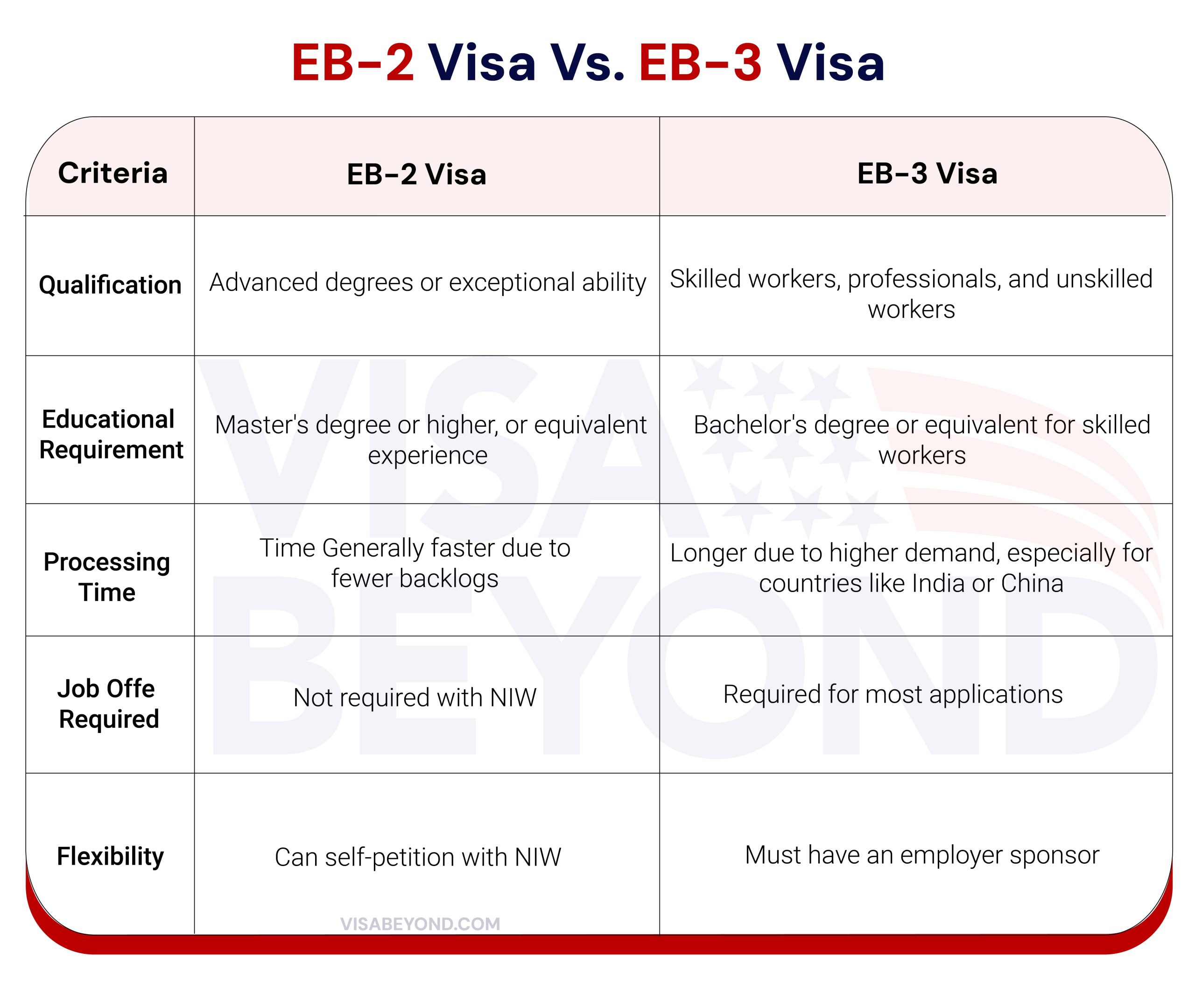
While both visas offer a pathway to U.S. permanent residency, the EB-2 Visa is preferable if you meet the requirements, as it often has faster processing times and provides the option to self-petition through the NIW. For more on the differences, visit USCIS EB-2 vs EB-3.
EB-2 National Interest Waiver (NIW)
The National Interest Waiver (NIW) is a subset of the EB-2 Visa category, which allows professionals to self-petition for permanent residency without the need for a U.S. employer. The NIW is available to those whose work is deemed to be in the national interest of the United States.
What is an EB-2 NIW ?
An EB-2 NIW allows applicants to bypass the traditional job offer and labor certification process if they can prove their work has substantial merit and national importance. To qualify, applicants must demonstrate that they are well-positioned to advance their field and that their contributions outweigh the need for the standard labor market requirements. This visa is ideal for professionals in research, healthcare, technology, and more.
Who Qualifies for an EB-2 National Interest Waiver?
To qualify for an EB-2 NIW, you must:
- Have either an advanced degree or exceptional ability.
- Demonstrate that your work benefits U.S. industries like healthcare, education, technology, or national security.
- Be able to show a history of accomplishments, including awards, patents, publications, or endorsements from recognized experts.
Key Advantages of the EB-2 NIW for Entrepreneurs and Professionals
- No Employer Sponsorship Needed: Entrepreneurs can petition independently.
- Greater Flexibility: Professionals can change jobs or even industries without affecting their Green Card process.
- Faster Processing: The NIW often allows applicants to skip the lengthy labor certification process, expediting their path to permanent residency.
How to Build a Strong EB-2 NIW Petition
Follow these key strategies to create a compelling NIW petition:
- Prove National Importance: Focus on how your work will benefit the U.S. as a whole, using statistics or research.
- Gather Strong Evidence: Use letters of recommendation, patents, or awards to support your case.
- Detailed Work Plan: Provide a clear, actionable plan for how your work will be conducted in the U.S. and its expected outcomes.
Key Considerations for Self-Petitioning Through EB-2 NIW
- Showcase Your Achievements: Use tangible evidence such as patents or industry recognition.
- Prepare for Thorough Scrutiny: Be ready to prove both your qualifications and the importance of your work to the U.S.
- Use Legal Assistance: Working with an experienced immigration attorney can help strengthen your petition.
EB-2 Priority Dates and Processing
Priority dates play a significant role in the EB-2 process. They determine when you can move forward with your visa application based on visa availability for your country.
Understanding EB-2 Visa Priority Dates
Your priority date is the date your Form I-140 is filed with USCIS. It determines your place in line for a visa number. Given the country-specific caps, it’s important to monitor the Visa Bulletin to know when your priority date becomes current.
Understanding EB-2 Visa Priority Dates
You can track your priority date using the Visa Bulletin, updated monthly by the U.S. Department of State. Check your priority date status and visa availability at Visa Bulletin.
Monitor Monthly Updates:
The bulletin is updated around the 15th of every month. Bookmark the official Visa Bulletin page and check it regularly to see the latest updates for your country and category.
Compare Your Priority Date:
Your priority date is the date when your Form I-140 was filed. Compare this date with the Final Action Dates and Dates for Filing listed in the Visa Bulletin to see if you can proceed.
Use USCIS Resources:
The USCIS also provides updates and advice on how to use the Visa Bulletin, especially if you're unsure about which chart to use for your case. You can refer to their Visa Bulletin page for further guidance.
Stay Prepared:
If your priority date becomes current, ensure that all your documents (such as Form I-485) are prepared so you can file or adjust your status promptly.
How Retrogression Effects EB-2 Priority Dates
Retrogression occurs when visa demand exceeds supply for a given country. When retrogression happens, applicants from affected countries must wait until their priority date becomes current again, sometimes causing lengthy delays.
What to Do If Your EB-2 Priority Date Retrogression
If priority date retrogression happens, it means the availability of a visa for your country has moved backward, causing delays in processing. Here’s what you can do:
- Stay Updated: Regularly check the Visa Bulletin for the latest updates on your priority date status.
- Prepare Documents: Have all your paperwork ready so that when your date becomes current again, you can act quickly.
- Consult with an Attorney: Consider seeking legal advice to explore potential alternatives or ways to expedite the process.
Visa Bulletin Updates for EB-2 Visa Holders
The Visa Bulletin shows visa availability for each country and employment-based category. To stay updated, regularly check the Visa Bulletin, which can help you understand when your priority date will be current.
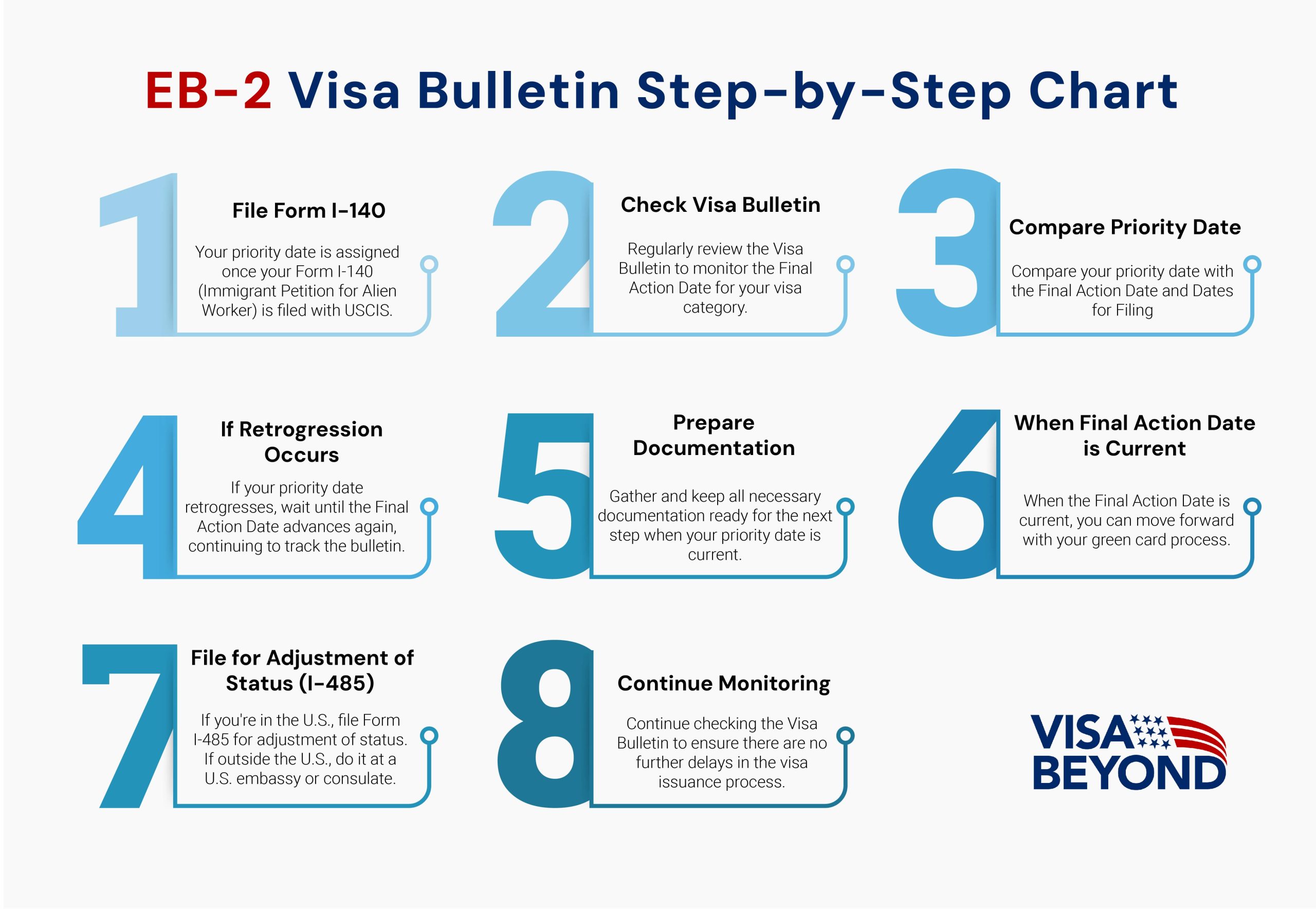
Eligibility and Requirements for EB-2 Visa
The EB-2 Visa is a great option for highly skilled professionals looking to obtain U.S. permanent residency. Understanding the eligibility requirements is key to determining whether this visa category is the right fit for you. Below is a comprehensive breakdown of eligibility criteria, including education, experience, and job qualifications.
Who is Eligible for the EB-2 Visa? A Complete Breakdown
To qualify for the EB-2 Visa, applicants must fall into one of two categories:
- Advanced Degree Holders: You must have a degree higher than a bachelor’s (e.g., master’s or PhD) or a bachelor’s degree with five years of progressive work experience in the field.
- Individuals with Exceptional Ability: If you do not hold an advanced degree, you may still qualify if you can demonstrate exceptional ability in your profession, which is defined as a level of expertise significantly above the norm.
Additionally, all applicants must show that their work benefits the U.S. economy, culture, or national interests.
Educational and Professional Qualifications for EB-2 Visa
To meet the educational requirements for the EB-2 Visa, you must have at least a:
- Master’s degree or equivalent from a recognized institution, or
- Bachelor’s degree plus at least five years of progressive experience in your field.
For professional qualifications, applicants must provide:
- Letters of recommendation from peers and supervisors.
- Documentation of awards, achievements, or publications that showcase their expertise.
What Jobs Qualify for EB-2 Visa?
The EB-2 Visa covers a wide range of professions, including:
STEM fields:
Engineers, scientists, and technology professionals.
Healthcare:
Doctors, surgeons, and medical researchers.
Business and Finance:
Executives and financial analysts.
Academia and Research:
University professors and researchers with recognized contributions in their fields.
To determine if your job qualifies, check the U.S. Department of Labor O*NET database, which outlines jobs considered in demand for EB-2.
How to Prove Exceptional Ability for EB-2 Visa
To prove exceptional ability for an EB-2 Visa, you must provide at least three of the following:
- Official academic records showing your degree or certifications.
- Letters from current or former employers proving at least 10 years of full-time experience in your field.
- Professional licenses or certifications in your occupation.
- Membership in professional associations relevant to your field.
- Recognition for achievements or significant contributions to your field, such as awards or published research.
USCIS evaluates the overall significance of your contributions, so documentation must be substantial and well-organized.
EB-2 Visa vs. EB-1 Visa: Which Category Fits Your Profile?
Both EB-2 and EB-1 visas offer pathways to permanent residency, but they cater to different groups:
- EB-1 Visa is for individuals with extraordinary ability, such as Nobel Prize winners, top executives, or internationally recognized researchers.
- EB-2 Visa is more accessible to professionals with advanced degrees or exceptional ability, but the standards for “exceptional ability” are lower than the “extraordinary ability” required for EB-1.
If you’re a recognized leader in your field, EB-1 might be faster, but EB-2 is more achievable for most professionals.
Key Differences Between Employment-Based Visas : EB-2, EB-3, and EB-1
For professionals with advanced degrees, the EB-2 Visa is usually a better fit than EB-3, offering faster processing and less competition.
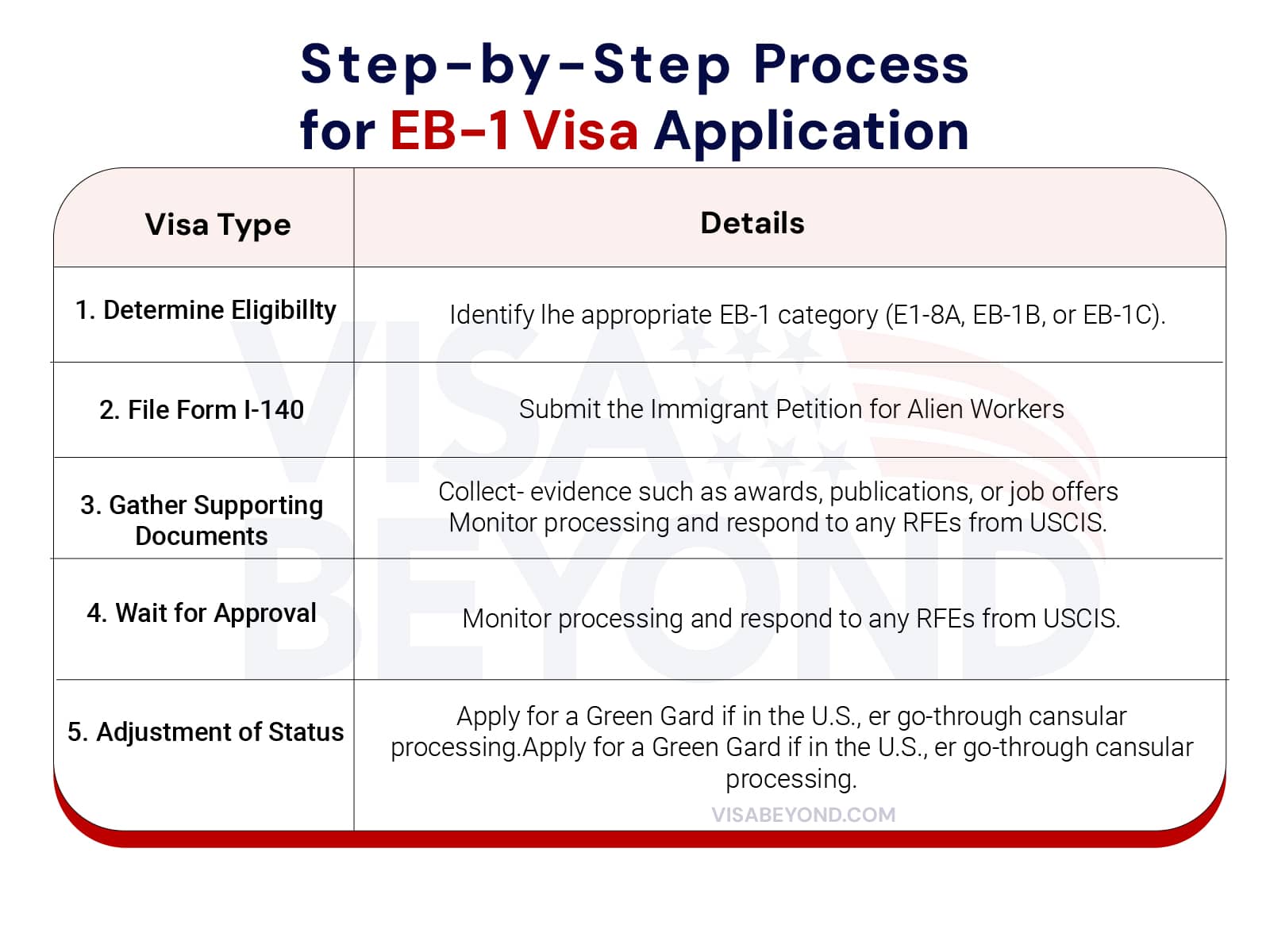
Applying for EB-2 Visa: Step-by-Step Guide
Applying for the EB-2 Visa involves several steps, including documentation, filing forms, and tracking your priority date. Below is a step-by-step guide to help you navigate the application process.
How to Apply for an EB-2 Visa: Key Steps
To begin, confirm your eligibility based on education or exceptional ability. If employer sponsorship is needed, they will file Form I-140 for you; otherwise, for NIW, you can file it yourself. Most EB-2 applicants must go through the PERM process to prove no qualified U.S. workers are available, but this is waived for NIW petitions. Finally, submit Form I-140 to USCIS with all supporting documents.
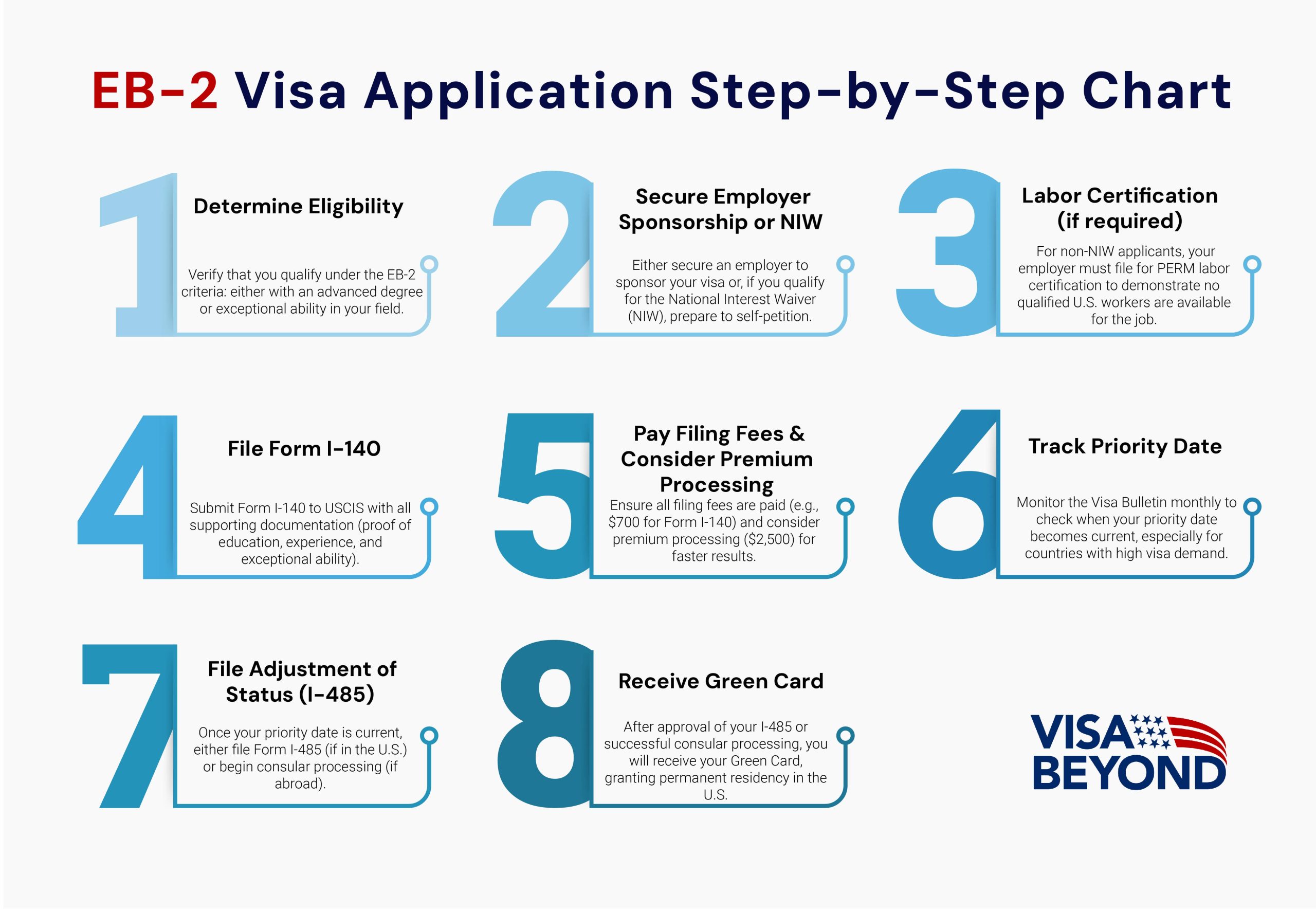
Required Documents for EB-2 Visa Application
When filing for the EB-2 Visa, you will need the following documents:
- Educational transcripts (official copies from universities).
- Proof of work experience (letters from employers).
- Awards and certifications (to support claims of exceptional ability).
- Form I-140, with all necessary forms of identification, passport copies, and fee payment.
Filing Form I-140 for EB-2 Visa: What to Know
Form I-140 is the key form in the EB-2 application process. Key points include:
- Supporting documents: Proof of education, experience, or exceptional ability.
- Filing fee: The current fee for Form I-140 is $700 (as of 2024).
- Processing time: Typically, 4-6 months. Premium processing, which shortens this time to 15 days, is available for an additional fee.
Costs and Fees for EB-2 Visa Filing
Costs associated with the EB-2 Visa include:
- Form I-140 filing fee: $700
- PERM labor certification (if applicable): Paid by the employer.
- Premium processing (optional): $2,500
- Adjustment of Status (I-485): $1,225 for most applicants.
The processing time for an EB-2 Visa depends on several factors:
How Long Does It Take to Get an EB-2 Visa?
The processing time for an EB-2 Visa depends on several factors:
- I-140 Processing: Takes approximately 4-6 months.
- PERM Process: Adds 6-12 months, unless waived through NIW.
- Priority Date: Check the Visa Bulletin for backlogs in your country. For countries with high demand, wait times could extend beyond several years.
Tips for a Successful EB-2 Visa Application
- Organize Documentation: Submit all forms and evidence in an organized, clear manner.
- Use Professional Letters of Support: From recognized experts or employers in your field.
- Consult an Immigration Attorney: For complicated cases or NIW petitions, legal advice can increase your chances of success.
How to Expedite EB-2 Visa Process
To expedite the EB-2 Visa process:
File for Premium Processing:
For an additional fee of $2,500 (as of 2024), USCIS will process Form I-140 within 15 calendar days.
Ensure All Documents are Complete:
Double-check all forms, supporting documentation, and fees to avoid delays due to Requests for Evidence (RFEs).
Avoid Common Mistakes:
Incorrect or missing information is a frequent cause of delays. Make sure all information on your forms is accurate and up-to-date.
Monitor Visa Bulletin:
If your priority date is approaching, have all your documents ready and submit your I-485or start consular processing as soon as your date becomes current.
Consult with an Immigration Attorney:
- If you face complications, legal assistance can help expedite the process and avoid potential delays.
EB-2 Visa Green Card Pathway
The EB-2 Visa provides a clear path to obtaining a U.S. Green Card (permanent residency). Once your EB-2 petition is approved, you can transition smoothly from a non-immigrant visa to a permanent resident, bringing both career stability and residency benefits for you and your family.
How to Transition from EB-2 Visa to Green Card
Transitioning from an EB-2 Visa to a Green Card involves several key steps:
- Form I-140 Approval: After your Form I-140 is approved by USCIS, your priority date becomes a critical factor in determining when you can apply for a Green Card.
- Check Visa Bulletin: Use the Visa Bulletin to track when your priority date becomes current. This indicates when you can file for your Green Card.
- Adjustment of Status (I-485): If you are already in the U.S., you can file Form I-485 to adjust your status from non-immigrant to permanent resident.
- Consular Processing: If you are outside the U.S., you will need to complete consular processing at a U.S. embassy or consulate.
The process generally takes 8 to 12 months, depending on visa availability and any backlogs in your country of origin.
Concurrent Filing of EB-2 I-140 and I-485: Key Steps
If your priority date is current, you may file both Form I-140 (Immigrant Petition for Alien Worker) and Form I-485 (Application to Register Permanent Residence) simultaneously. This is known as concurrent filing and offers several advantages:
- Faster Processing: Submitting both forms at the same time can significantly reduce the wait for your Green Card.
- Work Authorization (EAD): Concurrent filing allows you to apply for an Employment Authorization Document (EAD) and Advance Parole for travel while your Green Card application is pending.
- Filing Costs: Ensure you include the correct fees for both forms. The current cost for I-485 is $1,225 for most applicants.
Concurrent filing is beneficial for applicants who meet eligibility criteria, as it speeds up the overall process.
What Happens After You File Your I-485?
After you submit Form I-485 (Adjustment of Status), here’s what to expect:
Receipt Notice:
USCIS will send you a receipt notice acknowledging your application.
Biometrics Appointment:
You’ll receive an appointment notice for biometrics (fingerprinting) to verify your identity.
Employment and Travel Authorization:
If you applied for an EAD and Advance Parole, you may receive authorization to work and travel while waiting for your Green Card.
Interview:
USCIS may require an in-person interview. Be prepared to discuss your background, employment, and relationship to your sponsor (if applicable).
Decision:
Once your application is approved, USCIS will mail you your Green Card. Processing times can vary from several months to over a year.
PERM Labor Certification for EB-2 Visa: What You Should Know
For most EB-2 applicants, the PERM labor certification is a required step. This is how the U.S. government ensures that hiring a foreign worker will not negatively impact American workers. Here’s what you need to know about PERM:
- Employer Responsibility: Your employer must file for the Permanent Labor Certification (PERM) with the Department of Labor (DOL) before submitting Form I-140.
- Job Posting Requirements: The employer must demonstrate that they made a genuine effort to recruit U.S. workers by advertising the job and showing that no qualified U.S. workers are available for the position.
- Processing Time: The PERM process typically takes between 6 to 12 months. Delays can occur if there are any audits or additional reviews by the Department of Labor.
Once the labor certification is approved, your employer can file Form I-140.
Let’s Make Your U.S. Dreams a Reality.
How to Avoid Delays in the EB-2 Green Card Process
Avoiding delays in your EB-2 Green Card process requires attention to detail and timely action. Here are the best strategies:
Complete Documentation:
Ensure all forms (I-140, I-485, and others) are filled out completely and accurately. Missing information can lead to Requests for Evidence (RFEs).
Stay Updated on Visa Bulletin:
Regularly monitor the Visa Bulletin to know when your priority date is current. Missing this update can delay your application.
Premium Processing:
If eligible, consider using premium processing for your I-140 to reduce processing time to 15 days.
Respond Quickly to RFEs:
If USCIS requests additional information, respond promptly to avoid further delays.
Prepare for Interview:
Ensure all required documentation is ready for your interview (if required), such as proof of employment and qualifications.
Handling EB-2 Visa Denials, RFEs, and Appeals
While most EB-2 petitions are approved, denials, Requests for Evidence (RFEs), and appeals can happen. Knowing how to navigate these situations can make a big difference in your immigration process.
Top Reasons for EB-2 Visa Denials and How to Avoid Them
Common reasons for EB-2 Visa denials include:
- Insufficient Evidence: Failing to prove that you meet the education or exceptional ability requirements.
- Labor Certification Issues: If your employer does not complete the PERM process correctly, your petition may be denied.
- Incomplete Forms: Missing information or errors on Form I-140 or I-485 can result in denial.
How to Avoid Denials:
- Double-check that your qualifications meet EB-2 requirements.
- Ensure your employer properly completes the labor certification process.
- Work with an immigration attorney to verify that all forms are filled out correctly.
How to Respond to an EB-2 Request for Evidence (RFE)
If USCIS issues an RFE for your EB-2 petition, it means they need additional evidence to make a decision. Here’s how to respond effectively:
- Carefully Read the RFE: USCIS will specify exactly what information or documentation is needed.
- Provide Requested Documents: Gather all the requested materials promptly, such as proof of qualifications, employment, or labor certification.
- Submit the Response on Time: You must respond to the RFE within the time frame given, usually 87 days. Late responses may result in denial.
Working with an experienced attorney can ensure that you submit a strong response and avoid further delays.
Appealing an EB-2 Visa Denial: What to Do
If your EB-2 visa petition is denied, you may have the option to appeal or file a motion to reconsider. Here’s what you need to do:
File a Motion to Reopen or Reconsider:
This can be done if new evidence becomes available or if there was an error in the application review process.
Submit Form I-290B:
This form must be filed with USCIS to officially appeal the denial. Make sure to include supporting documentation that addresses the reason for the denial.
Hire Legal Assistance:
An experienced immigration lawyer can help build a strong case for your appeal.
Visa Alternatives After EB-2 Denial
If your EB-2 Visa application is denied, consider these alternatives:
- EB-3 Visa: If your qualifications do not meet EB-2 standards, you may still qualify for an EB-3 Visa, which is for skilled workers and professionals with less advanced degrees.
- O-1 Visa: This is a temporary visa for individuals with extraordinary ability in their field.
- National Interest Waiver (NIW): If your initial petition was employer-sponsored, consider applying for an EB-2 with an NIW, which allows you to self-petition.
Each of these options offers a potential pathway to U.S. residency, depending on your qualifications and field.
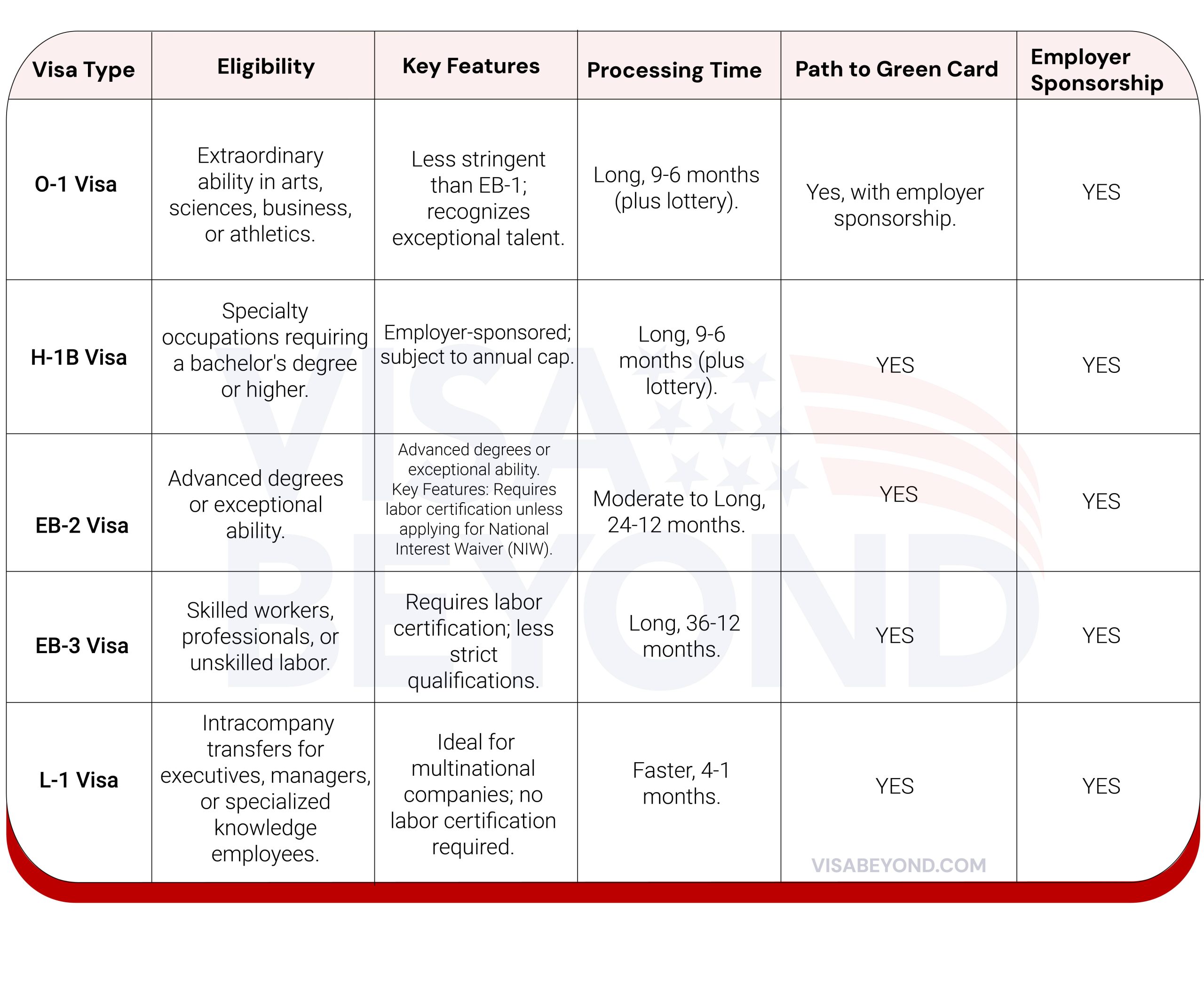
Maximizing Your EB-2 Visa Experience
Once you have secured your EB-2 Visa, it’s essential to make the most of the opportunities it provides. From strategizing career growth to utilizing legal resources and building a professional network, optimizing your EB-2 Visa experience can lead to long-term career success and personal fulfillment. Here’s how you can leverage your EB-2 status to achieve your professional and personal goals.
Strategizing Career Growth on an EB-2 Visa
An EB-2 Visa opens doors to career growth in the U.S. by offering a fast track to permanent residency. Here’s how you can maximize this opportunity:
- Target Leadership Roles: Use your advanced degree or exceptional ability to pursue management or executive positions within your field.
- Leverage Dual Intent: With the EB-2 Visa’s dual intent, you can apply for permanent residency without disrupting your non-immigrant status, giving you flexibility to explore job opportunities.
- Stay Updated in Your Field: Continue honing your skills through professional development, industry certifications, and networking to stay competitive and rise within your industry.
- Explore New Opportunities: As a permanent resident, you have the flexibility to switch employers or even start your own business once you’ve received your Green Card.
How to Leverage Your EB-2 Visa for Long-Term Career Success
An EB-2 Visa provides a unique platform for long-term career success in the U.S. Here’s how to make the most of it:
- Explore Advanced Roles: As a Green Card holder, you can pursue higher-paying, advanced roles that may have previously been off-limits due to visa restrictions.
- Start Your Own Business: After obtaining your Green Card, you can start your own business or become an entrepreneur.
- Expand Your Expertise: Continue your education through U.S. universities, certifications, or online courses to remain a top performer in your field.
- Access More Job Opportunities: With permanent residency, you can apply for roles across industries, including government contracts, that require citizenship or residency.
Taking full advantage of your EB-2 Visa ensures that you build a strong, lasting career in the U.S.
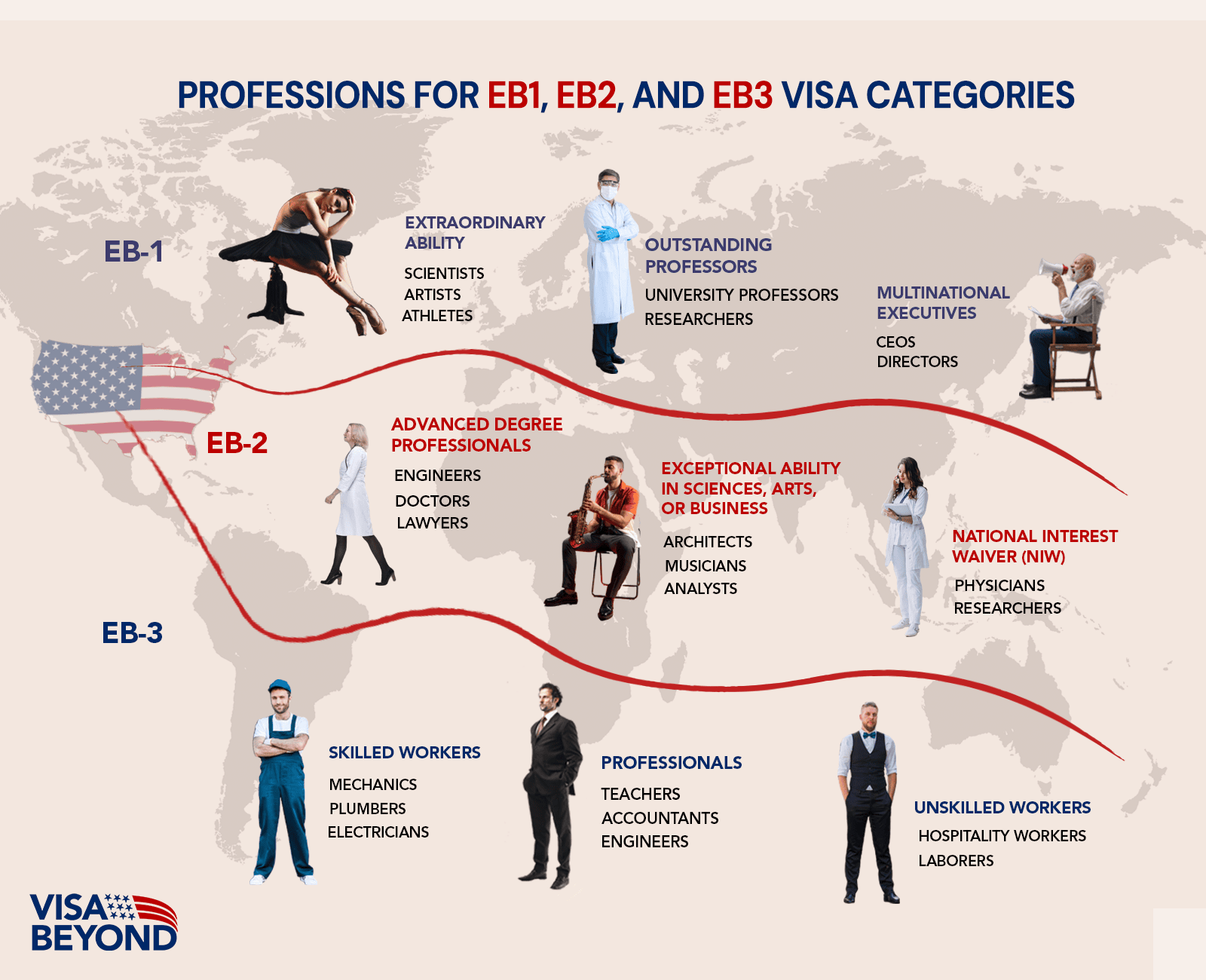
Additional Considerations for EB-2 Visa Holders
Beyond career growth, EB-2 Visa holders should be aware of additional benefits and considerations, including family visa options, travel restrictions, and work authorizations for dependents.
Family Benefits for EB-2 Visa Holders: H-4 Dependent Visa Overview
Your spouse and children (under 21) can join you in the U.S. on an H-4 Dependent Visa. Here’s what you need to know:
- Eligibility: Spouses and children under 21 are eligible for the H-4 Visa, allowing them to live with you in the U.S. while your EB-2 status is active.
- Application Process: The H-4 Visa can be applied for alongside your EB-2 Visa or later, depending on your family’s circumstances.
- Work Authorization: Spouses on H-4 status may apply for work authorization (EAD), allowing them to work in the U.S. if your I-140 has been approved.
- Education: Children on an H-4 visa can attend U.S. schools and potentially qualify for in-state tuition at universities.
This visa allows your family to stay together and build their own futures in the U.S.

Traveling Internationally on an EB-2 Visa: What You Need to Know
Traveling internationally while holding an EB-2 Visa requires careful planning to avoid jeopardizing your visa status:
- Advance Parole: If you have filed Form I-485 (adjustment of status) and it’s pending, you will need to apply for Advance Parole to travel outside the U.S. without abandoning your application.
- Maintaining Status: Always ensure you have proper documentation and proof of your visa status before leaving and re-entering the U.S.
- Avoid Extended Absences: Long-term international trips can affect your residency status. Stay informed about any travel restrictions and USCIS requirements.
Why the EB-2 Visa is a Compelling Choice
The EB-2 Visa stands out as an excellent pathway for professionals seeking long-term career growth and stability in the U.S. With its focus on advanced degree holders and individuals with exceptional ability, it provides faster processing times compared to other employment-based visas. The flexibility to include family members and the option for spouses to gain work authorization make it especially attractive for those looking to build a life in the U.S.
For skilled workers, entrepreneurs, and professionals, the EB-2 Visa offers not just a job, but a future. It’s an investment in your potential, with opportunities to transition smoothly to a Green Card and eventually, permanent residency. By leveraging your expertise and using the right resources, the EB-2 Visa can be the stepping stone to achieving your professional dreams in the U.S.
Latest News.
From the blog

-
- Posted by Alvez
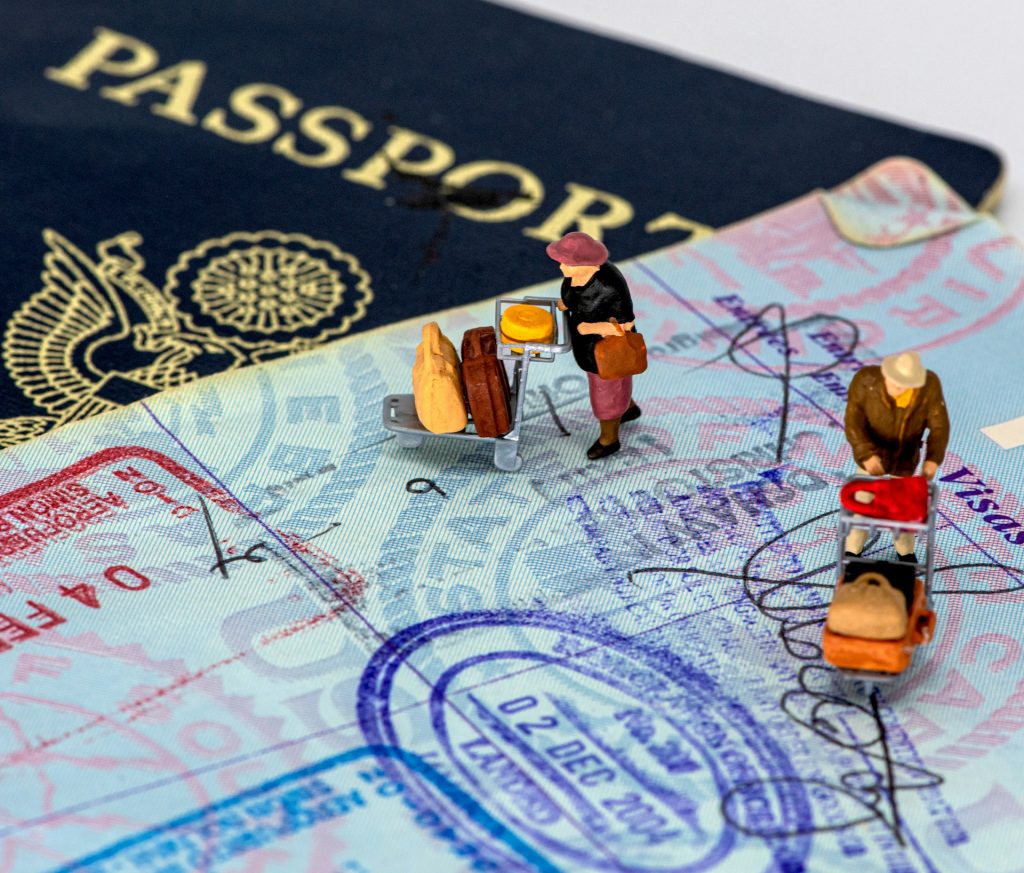
-
- Posted by Alvez

-
- Posted by Alvez
"*" indicates required fields
